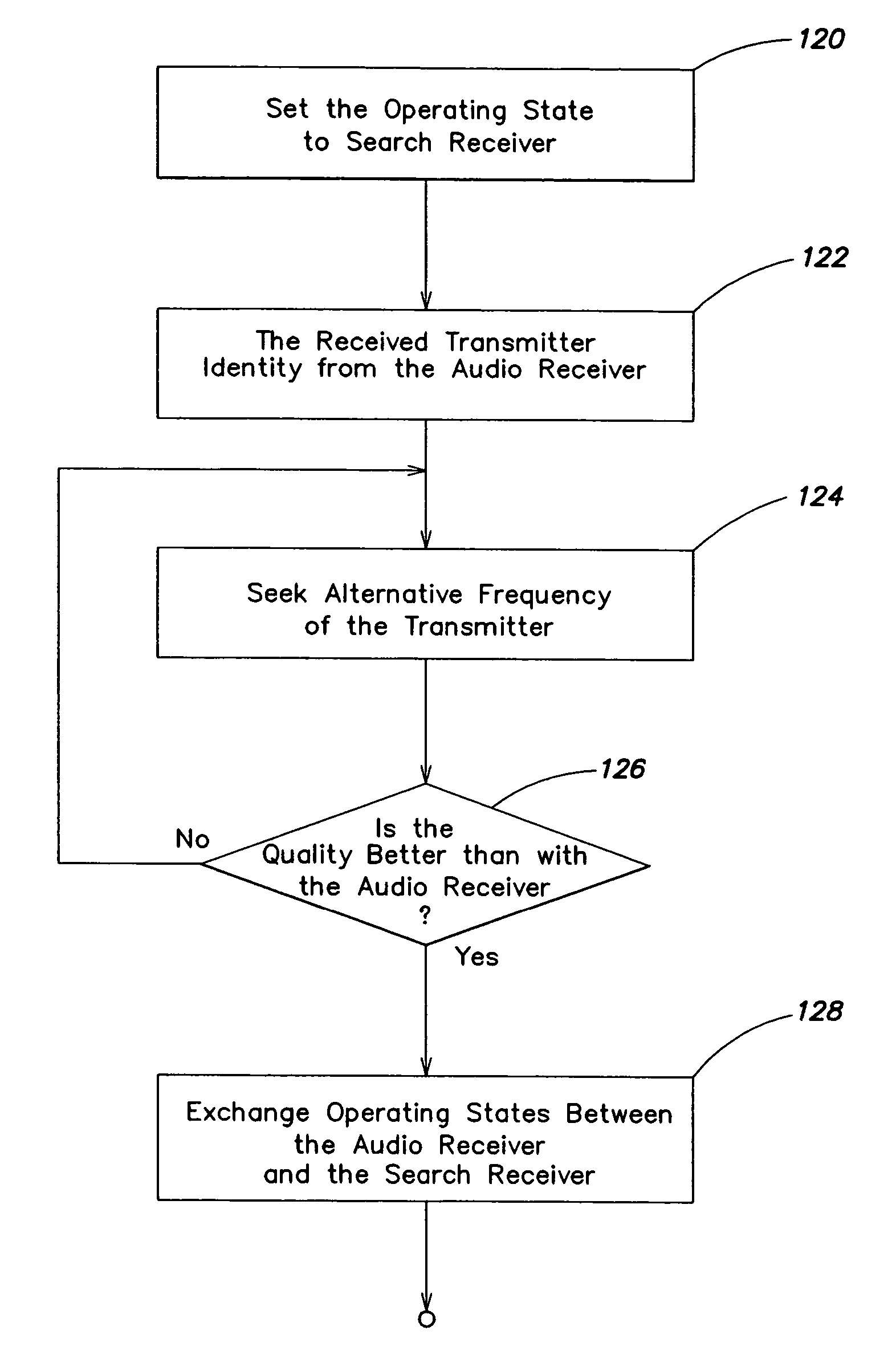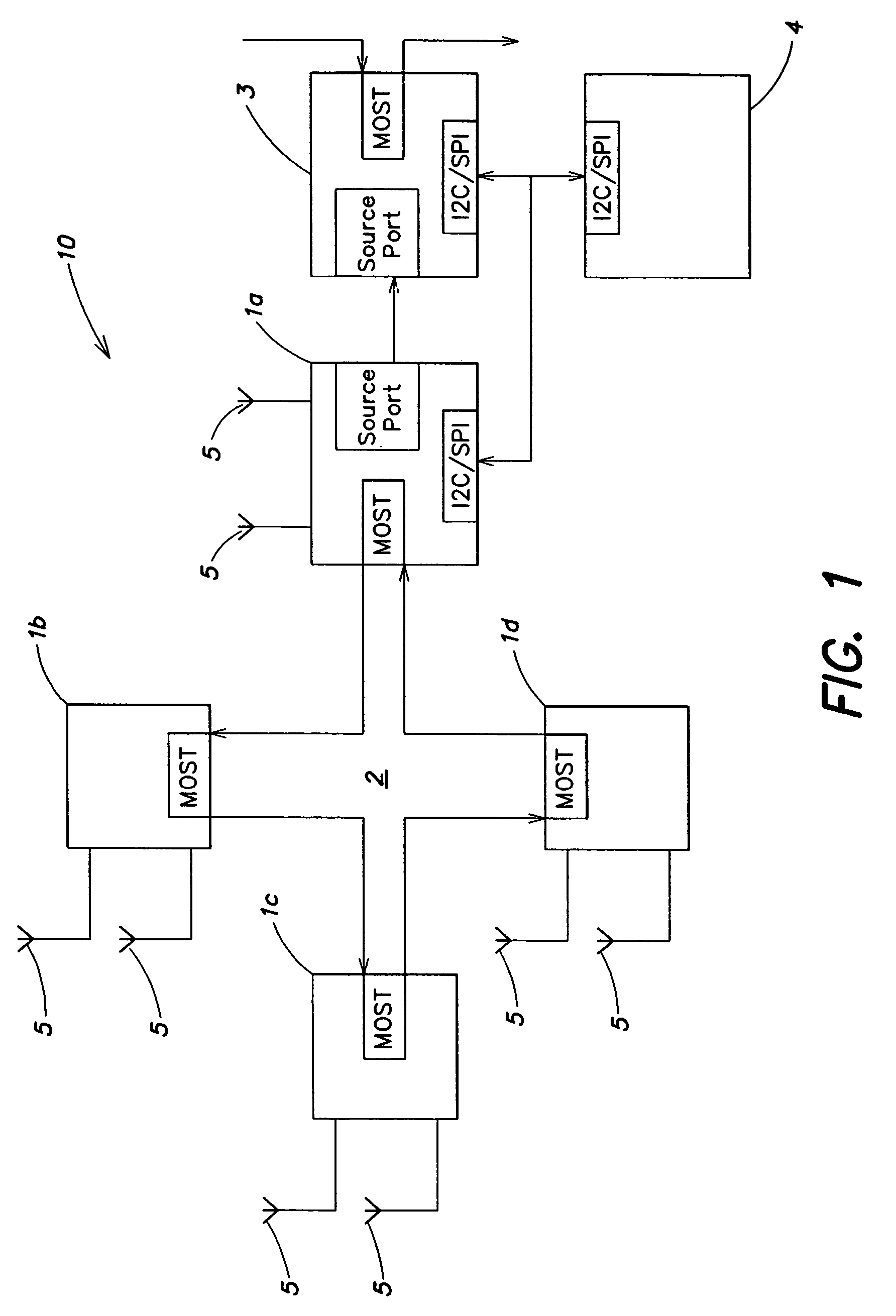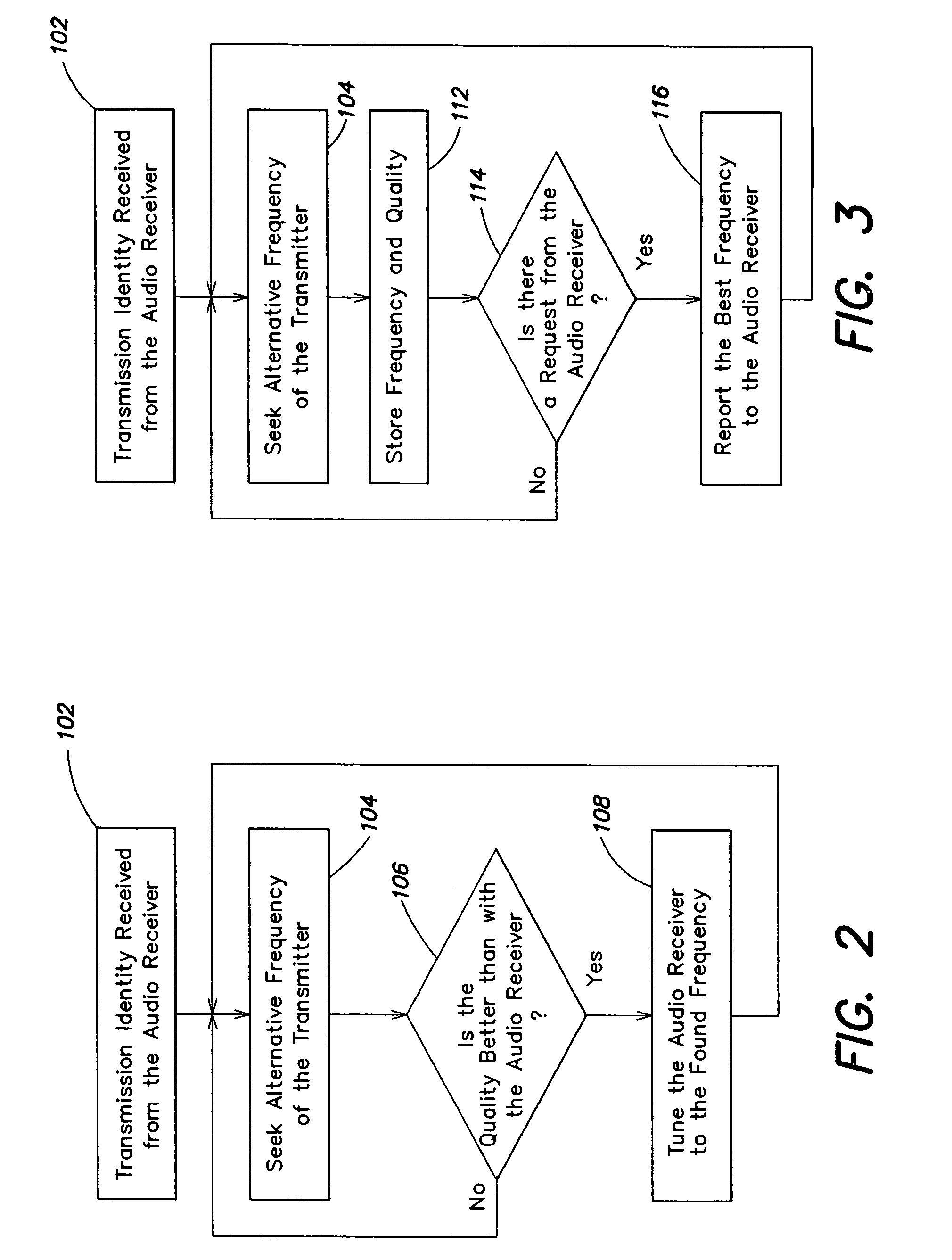Radio reception system with automatic tuning
a technology of automatic tuning and reception system, applied in the field of radio receiving system, can solve the problems of unsatisfactory reception on the presently set frequency, receivers that do not provide uninterrupted listening, and users are extremely annoying, and achieve the effect of facilitating data reception
- Summary
- Abstract
- Description
- Claims
- Application Information
AI Technical Summary
Benefits of technology
Problems solved by technology
Method used
Image
Examples
Embodiment Construction
[0019]FIG. 1 illustrates a radio reception system 10 that includes at least two receivers, for example receivers 1a, 1b, 1c, 1d. The individual receivers are connected by a bus 2 (e.g., a MOST ring ). On this MOST ring 2, the individual receivers exchange information about the identity of a received transmitter and about reception qualities. An audio signal processing unit 3 is connected to the receiver 1a. This unit 3 amplifies and shapes the spectrum of the audio signal received from the receiver 1a, and provides an output signal to a loudspeaker (not shown). An external microcontroller 4 has input elements so that the user can input control instructions, for example to select a transmitter, regulate the tone, volume, and balance, etc. The microcontroller 4 is connected to the audio signal processing unit 3 and to the receiver 1a. The receiver 1a forwards instructions received from the microcontroller 4 to the MOST ring 2, inasmuch as these instructions concern any of the remainin...
PUM
 Login to View More
Login to View More Abstract
Description
Claims
Application Information
 Login to View More
Login to View More - R&D
- Intellectual Property
- Life Sciences
- Materials
- Tech Scout
- Unparalleled Data Quality
- Higher Quality Content
- 60% Fewer Hallucinations
Browse by: Latest US Patents, China's latest patents, Technical Efficacy Thesaurus, Application Domain, Technology Topic, Popular Technical Reports.
© 2025 PatSnap. All rights reserved.Legal|Privacy policy|Modern Slavery Act Transparency Statement|Sitemap|About US| Contact US: help@patsnap.com



